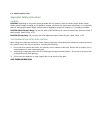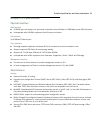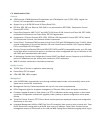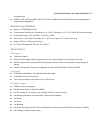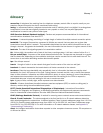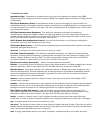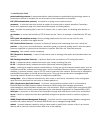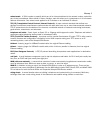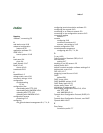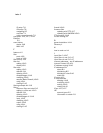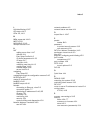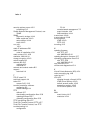Glossary 3
host computer: A communications device that enables users to run applications programs to perform such
functions as text editing, program execution, access to data bases, etc.
internet: A set of networks connected together by routers. This is a general term, not to be confused with the
large, multi-organizational collection of IP networks known as the Internet. An internet is sometimes also known
as an internetwork.
internet address, IP address: Any computing device that uses the Internet Protocol (IP) must be assigned an
internet or IP address. This is a 32-bit number assigned by the system administrator, usually written in the form
of 4 decimal fields separated by periods, e.g., 192.9.200.1. Part of the internet address is the IP network
number (IP network address), and part is the host address (IP host address). All machines on a given IP
network use the same IP network number, and each machine has a unique IP host address. The system
administrator sets the subnet mask to specify how much of the address is network number and how much is
host address. See also Class A, B, and C networks.
IP (Internet Protocol): A networking protocol developed for use on computer systems that use the UNIX
operating system. Often used with Ethernet cabling systems. In this manual, IP is used as an umbrella term to
cover all packets and networking operations that include the use of the Internet Protocol. See also TCP/IP.
IP address, IP host address, IP network address: See internet address.
IP broadcast: See broadcast.
ISP (Internet service provider): A company that provides Internet-related services. Most importantly, an ISP
provides Internet access services and products to other companies and consumers.
ITU (International Telecommunication Union): United Nations specialized agency for telecommunications.
Successor to CCITT.
LAN (local area network): A privately owned network that offers high-speed communications channels to
connect information processing equipment in a limited geographic area.
MIB (management information base): A standardized structure for SNMP management information.
modem: A device used to convert digital signals from a computer into analog signals that can be transmitted
across standard analog (not ISDN) telephone lines. Modem is a contraction of modulator-demodulator.
NAT (Network Address Translation): A feature that allows communication between the LAN connected to the
Netopia ISDN Router and the Internet using a single IP address, instead of having a separate IP address for
each computer on the network.
NetBIOS: A network communications protocol used on PC LANs.
network: A group of computer systems and other computer devices that communicate with one another.
network administrator: A person who coordinates the design, installation, and management of a network. A
network administrator is also responsible for troubleshooting and for adding new users to the network.
network log: A record of the names of devices, location of wire pairs, wall-jack numbers, and other information
about the network.
node: See host.
packet: A group of fixed-length binary digits, including the data and call control signals, that are transmitted
through an X.25 packet-switching network as a composite whole. The data, call control signals, and possible
error control information are arranged in a predetermined format. Packets do not always travel the same
pathway but are arranged in proper sequence at the destination side before forwarding the complete message
to an addressee.




